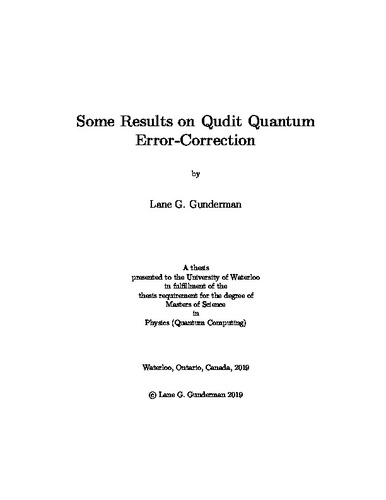| dc.description.abstract | Quantum computing’s seemingly perpetual promise of nearness still has a few hurdles
to surmount before it can become a reality. Among these hurdles is that of protection of
information from random errors. A potential solution for this challenge is stabilizer codes,
which are the analog of classical linear error-correcting codes, however, with an additional
axis of error possibility. By and large, quantum computing is discussed in the standard
qubit, or two-level, language, however, it is worth considering the case of qudits, or more
than two-level systems. Often times results follow simply from some form of algebraic
extension: typically group theory or linear algebra. In this work we consider some features
that are not immediately apparent from that approach, more often appealing to physical
intuition to guide our mathematical ideas, then proving these ideas using the language of
qudit operators.
Here we consider two particular previously unexplored ideas. The first idea is that of
embedding and inscribing of codes into spaces of different sizes than the stabilizer code
was originally designed for. Here, we show that all codes can be embedded, and that for
infinitely many primes we can in fact guarantee that the distance is at least preserved–a
somewhat surprising result. The second idea is, in a way an application of those presented
in the first idea, that of turning many stabilizer codes into hybrid codes by taking advantage
of relabelling of syndromes and the rapid increase in syndrome space upon using codes in
large spaces. Both of these are somewhat useful in their current forms, however, with some
additional mathematical work could be turned into potentially very powerful tools for the
protection of quantum information. We finish off by, and along the way, mentioning various
future directions to carry work on this. | en |

